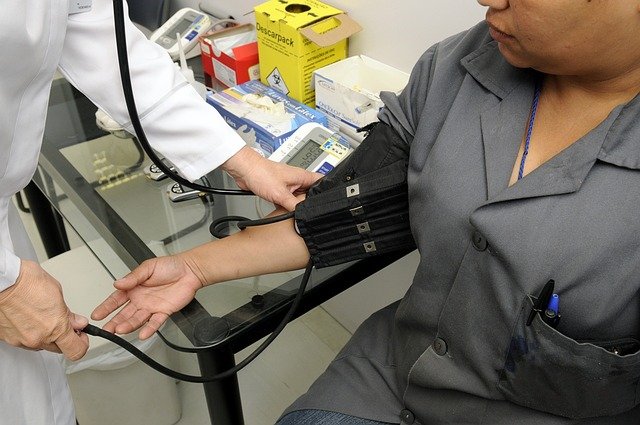Hemoglobinuria: Unexpected Signals You Must Not Ignore
Hemoglobinuria is a rare but serious condition that may silently signal underlying health issues. While often unnoticed in early stages, certain unexpected symptoms could point to a more significant problem. Understanding these signs is essential for timely diagnosis and treatment. This article uncovers the key warning signals of hemoglobinuria and what they could mean for your health.

Hemoglobinuria occurs when hemoglobin, the oxygen-carrying protein in red blood cells, appears in urine due to the breakdown of red blood cells within the body. This condition can manifest through various symptoms and may indicate underlying health problems that require medical evaluation. The presence of hemoglobin in urine often gives it a distinctive reddish or dark brown color, though this visual change may not always be immediately apparent to the untrained eye.
What Are Early Signs of Hemoglobinuria You Might Overlook?
The initial symptoms of hemoglobinuria can be subtle and easily mistaken for other conditions. Dark-colored urine, particularly first thing in the morning, represents one of the most common early indicators. This discoloration may range from pink to deep red or even black, depending on the concentration of hemoglobin present. Fatigue and weakness often accompany these visual changes, as the body loses red blood cells and experiences reduced oxygen transport capacity.
Back pain, particularly in the kidney area, may develop as the organs work to filter the excess hemoglobin. Some individuals experience abdominal discomfort or cramping, while others notice shortness of breath during routine activities. These symptoms can fluctuate in intensity and may worsen during periods of physical stress or illness.
How Hemoglobinuria Could Indicate a Deeper Health Issue
Several serious medical conditions can trigger hemoglobinuria, making proper diagnosis essential. Paroxysmal nocturnal hemoglobinuria represents a rare but significant blood disorder where red blood cells become susceptible to destruction by the body’s immune system. Autoimmune hemolytic anemia causes the immune system to attack healthy red blood cells, leading to their premature breakdown.
Infections, particularly those caused by certain bacteria or parasites, can damage red blood cells and result in hemoglobinuria. Kidney diseases, including glomerulonephritis and acute tubular necrosis, may also contribute to this condition. Additionally, certain medications, toxins, or genetic disorders affecting red blood cell structure can increase the likelihood of developing hemoglobinuria.
Important Diagnostic Steps for Detecting Hemoglobinuria Early
Medical professionals employ various diagnostic methods to identify and evaluate hemoglobinuria. Urinalysis serves as the primary screening tool, detecting the presence of hemoglobin and other abnormal substances in urine samples. Blood tests, including complete blood counts and hemoglobin levels, help assess the extent of red blood cell destruction and overall health status.
Specialized tests such as the Ham test or sucrose hemolysis test can identify specific conditions like paroxysmal nocturnal hemoglobinuria. Flow cytometry analysis examines red blood cell surface proteins to detect genetic abnormalities. Kidney function tests evaluate how well the organs process waste products and maintain proper fluid balance.
Myths About Hemoglobin in Urine and How to Approach Them
Common misconceptions about hemoglobinuria can delay proper treatment and worsen outcomes. Many people believe that dark urine always indicates dehydration, overlooking the possibility of underlying blood disorders. Others assume that intermittent symptoms are not serious enough to warrant medical attention, potentially missing critical diagnostic windows.
The myth that hemoglobinuria only affects older adults prevents younger individuals from seeking appropriate care when symptoms develop. Some people incorrectly believe that dietary changes alone can resolve the condition, when medical intervention may be necessary to address underlying causes. Understanding these misconceptions helps individuals make informed decisions about their health care.
Treatment Options for Nocturnal Hemoglobinuria
Treatment approaches for hemoglobinuria vary significantly depending on the underlying cause and severity of the condition. For paroxysmal nocturnal hemoglobinuria, complement inhibitor medications like eculizumab can reduce red blood cell destruction and improve quality of life. Blood transfusions may be necessary in severe cases to maintain adequate hemoglobin levels and prevent complications.
Supportive care measures include iron supplementation to address deficiencies caused by chronic blood loss, folic acid to support red blood cell production, and careful monitoring of kidney function. Immunosuppressive medications may be prescribed for autoimmune-related causes, while antibiotic treatment addresses infectious triggers.
| Treatment Type | Condition | Estimated Cost Range |
|---|---|---|
| Complement Inhibitor Therapy | Paroxysmal Nocturnal Hemoglobinuria | $400,000-$500,000 annually |
| Blood Transfusions | Severe Anemia | $1,200-$3,000 per unit |
| Iron Supplementation | Iron Deficiency | $15-$50 monthly |
| Immunosuppressive Therapy | Autoimmune Hemolysis | $2,000-$5,000 monthly |
Prices, rates, or cost estimates mentioned in this article are based on the latest available information but may change over time. Independent research is advised before making financial decisions.
The prognosis for hemoglobinuria depends largely on early detection and appropriate treatment of underlying causes. Regular monitoring and adherence to prescribed therapies can significantly improve outcomes and prevent long-term complications. Patients should maintain open communication with their healthcare providers and report any changes in symptoms or overall health status.
This article is for informational purposes only and should not be considered medical advice. Please consult a qualified healthcare professional for personalized guidance and treatment.




